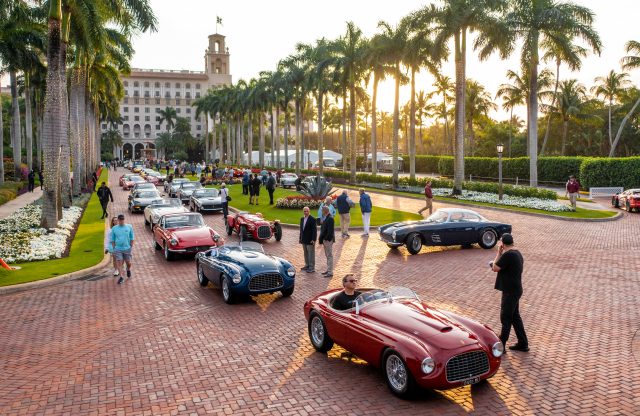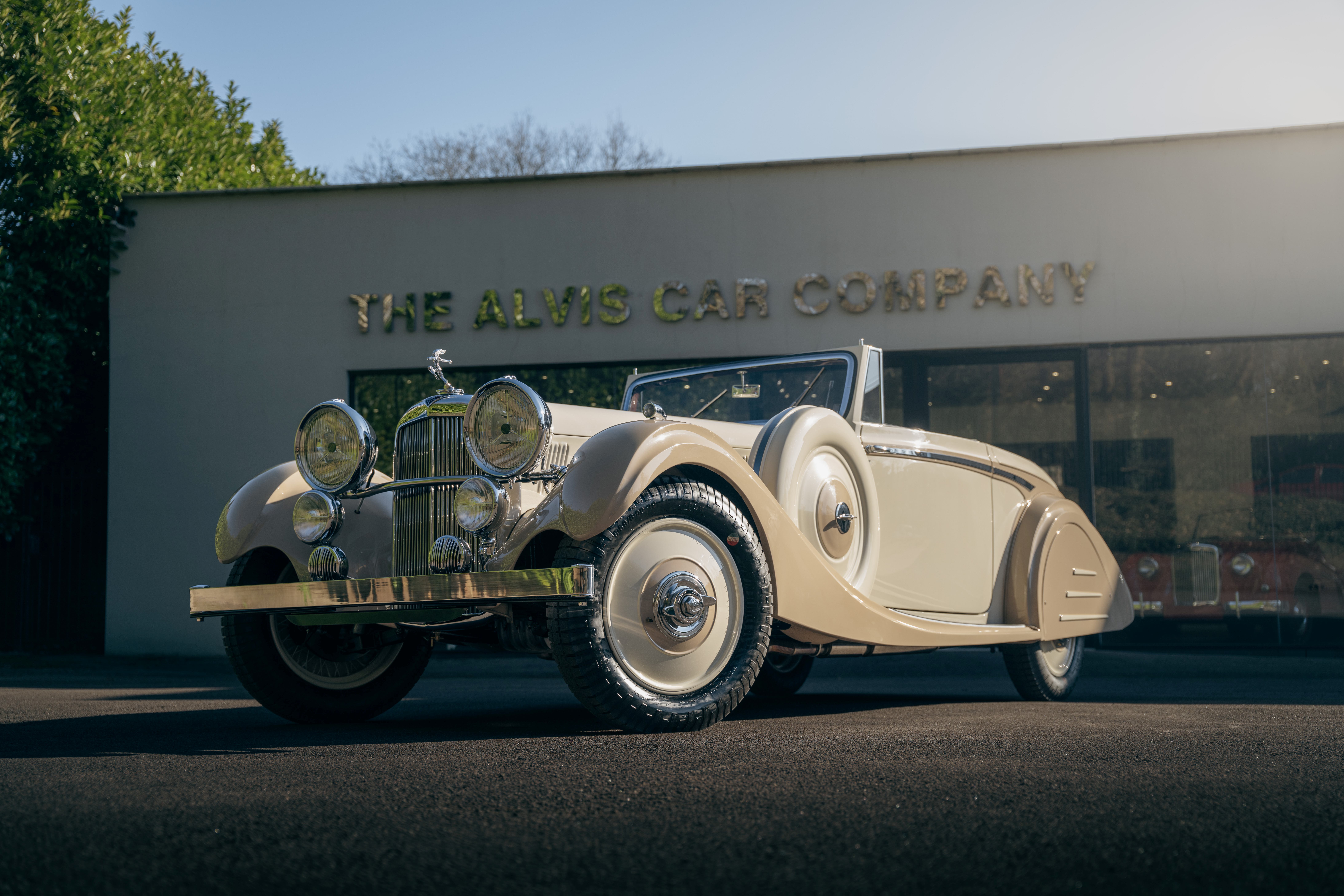WORDS: Massimo Delbò | PHOTOGRAPHY: cavallino classic
Imagine being a resident of one of the most celebrated winter retreats in the world: West Palm Beach, Florida, a small town acclaimed as one of the safest, most tranquil and wealthy zip codes in the whole US. You wake up early on Saturday morning to walk your poodle and, at the traffic lights, you find yourself confronted by a Ferrari 512 BB.
But it’s not a normal 512 BB. You are inches away from a roaring, imposing, red 1981 512 BBLM, with neither a number plate nor a silencer, that looks like it’s escaped from a race track. You jump back in surprise, only to discover that the BB is not alone. It is tailgated by several other old Ferraris, roaring by as their owners smile and wave “ciao” from the side windows on the road to the show field. Noisy, but at least friendly…
Welcome to West Palm Beach during the Palm Beach Cavallino Classic weekend. In October 1978, Cavallino Magazine was launched and quickly established itself as a discerning publication – fundamental, indeed, if you were into Ferraris, for one reason or another. Its trademark was a maniacal attention to detail, down to publishing the chassis number of every single car featured in the magazine, thus establishing a tradition that is still part of the publication today.

After the magazine came the event, in 1992, mainly because classic Ferrari owners were struggling to restore their cars to the way the vehicles were when they left Maranello. Cavallino Classic was created to be a sort of ‘informal certification session’ held once a year, where established personalities and specialists in the Ferrari world would act as judges, taking a detailed look at the collectors’ cars and preparing a detailed report on what they spotted that needed to be adjusted.
At Cavallino Classic, cars compete not against each other but against themselves, with the aim of trying to get better and better every year. The formal reward is the Platinum Award, assigned to every entry that achieves a score of more than 97 points out of the 100 they originally start with. It is very difficult to achieve, but having it increases the value of the car. The real values, indeed, are the notes written by the judges, which tell the owner where they still have room for improvement.
This is so useful that several entrants use Cavallino to check their freshly restored car before showing it at other concours around the world – Pebble Beach included. Then, there are the two Overall Outstanding Cars, one for Competition and one for Granturismo. Let’s call them Best of Show, picked by the class chief judges among the Platinum winners.
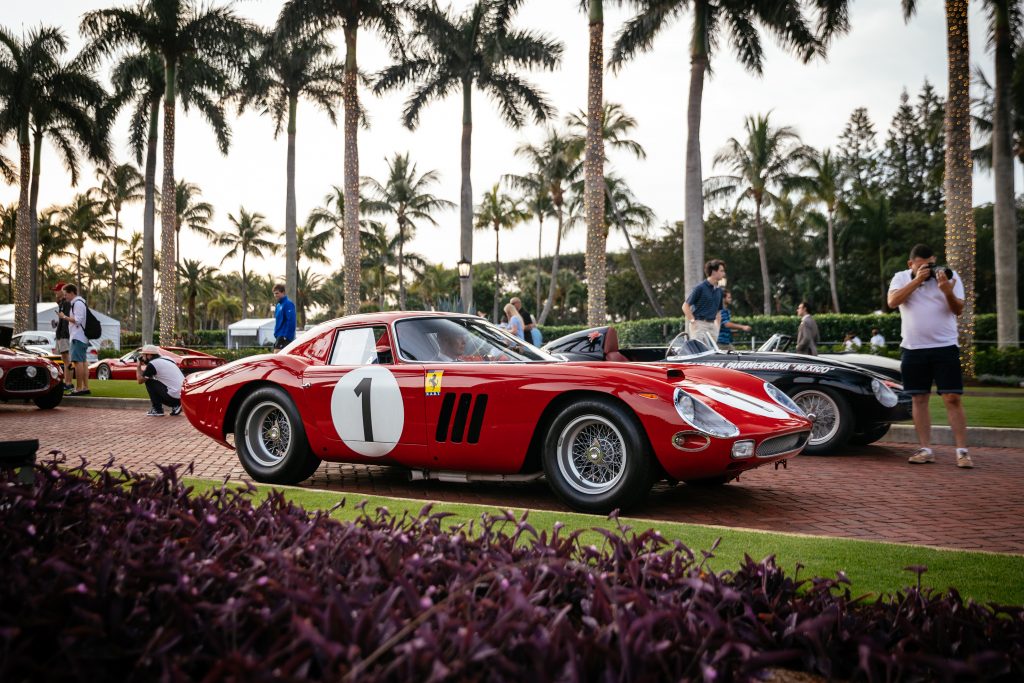
At Palm Beach Cavallino Classic 2022, these awards went to two very special cars among the 150 displayed. Recipient of the Granturismo award was the 1966 Ferrari 365P Speciale, chassis no. 8971 – the ‘Tre Posti’, or ‘Three Seater’, widely covered and featured in a recent issue of Magneto. It is the first of only two ever made, and is the very first road-going Ferrari manufactured with a rear-positioned engine. After being shown at an endless number of car events, it remained with American Ferrari importer Luigi Chinetti and his family for 48 years. With its new owner it underwent a very light restoration, bringing it back to the perfect condition it was when shown in period.
The other Overall Outstanding Car trophy went to one of the three 250GTOs on the field, the 1964 chassis no. 5573 GT, owned by an American collector. Only 36 250GTOs were made, between 1962 and 1964; 33 cars with the standard body, and three with the lower, more aerodynamic 1964 shape, a design that was adopted by four 1962 cars, too.
Chassis no. 5573 is the second GTO originally manufactured with the ‘1964’ body design, and it was driven by all of Ferrari’s F1 stars of the period, including John Surtees (World Champion and the season’s leading driver), Lorenzo Bandini, Ludovico Scarfiotti and Pedro Rodríguez. It was also raced by the 1961 World Champion Phil Hill, Jean Guichet – 1964 Le Mans 24 Hours winner – and by future member of the works Ferrari Formula 1 team Mike Parkes, for a total of six Ferrari F1 drivers driving it in World Championship races.
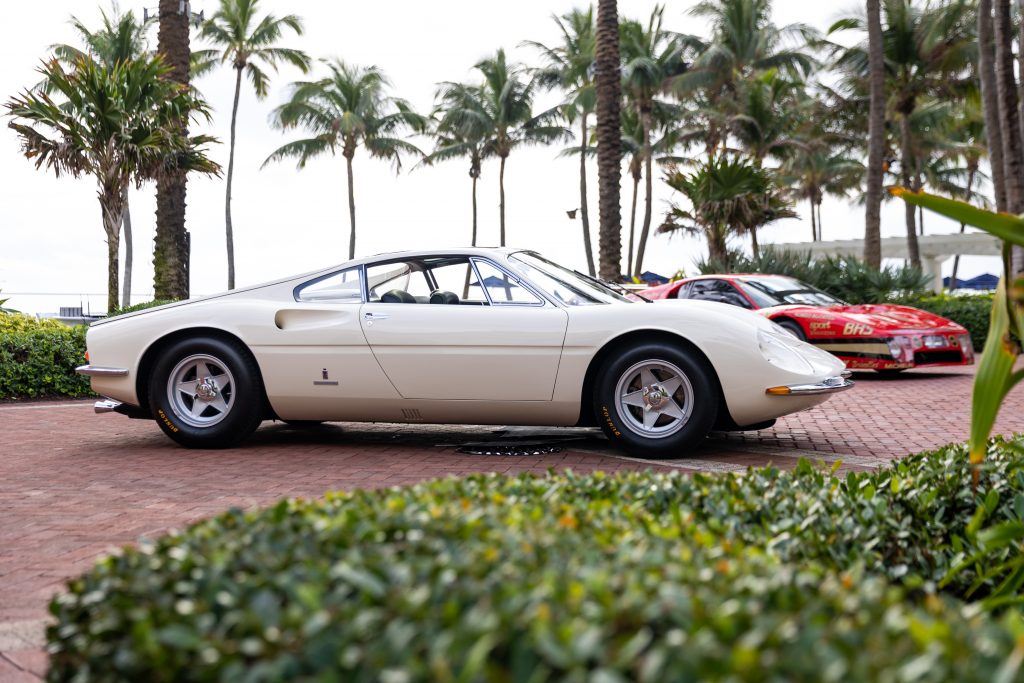
In 1972, no. 5573 joined the fabled Mas Du Clos collection of the legendary French Ferrari aficionado Pierre Bardinon. In reference to his 1964 GTO, Bardinon remarked: “If I could keep only one car, it would be this one.” In 2014 (by which time both Bardinon and his wife had passed away), the meticulously maintained car was purchased directly from the family by its current custodian.
The main class at the Palm Beach Cavallino Classic 2022 featured a special line-up of cars celebrating the 75th anniversary of Ferrari – one car for each year of the company’s existence from 1947 to 2021. In addition, one each of the current 2022 production models were brought along by Ferrari Automobili. The oldest model on the field was the 1948 166 Spyder Corsa no. 004C – the second Spyder Corsa and most likely the fourth Ferrari ever built. All eight Spyder Corsas survive to this day, but only two (chassis no. 004C and 016I) are still equipped with their original bodies. This car’s engine reveals stampings dating back to 1946, indicating that the powerplant started life as one of the very first batch of 125s. Most likely did the chassis, or at least part of it, too, confirming the suspicion that today there are no 125s left because they were all transformed into 166s.
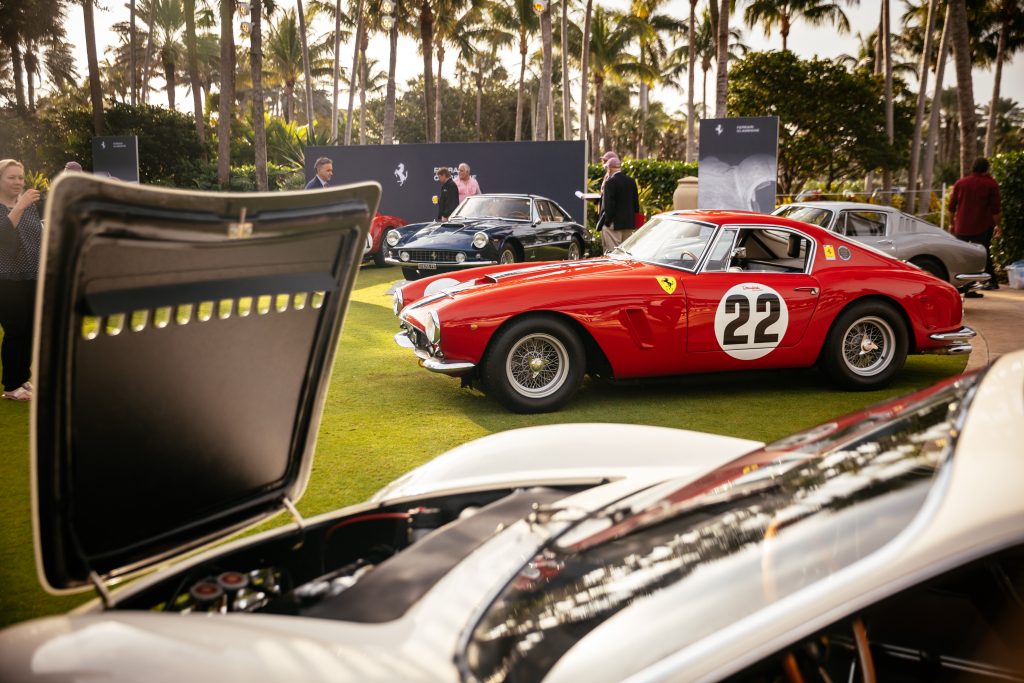
The car was extensively raced up until the mid-1950s, before being sold to the current owner’s father in 1964. Because of the importance of this early and highly original Ferrari, it has been kept preserved over the past 40 years. To see during the award ceremony the 166 parading on stage followed by the 1964 250GTO was a magical and very rare moment indeed.
As for the sound, two cars were the most acclaimed by the public: the 1993 Ferrari F40 LM (no. 95449), one of a series of around ten that was originally delivered in the US and never raced, and the 1994 Ferrari F333 SP no. 001, one of the 40 manufactured to mark Ferrari’s return to sports-prototype racing. This one was crashed twice during the 1994 Mugello test (once by Mauro Baldi and once by Jay Cochran), and in 1995 it entered the Matsuda Collection in Japan. Over the following decade it was sold several times around the world, and it was shown at Cavallino Classic 2022 just after a full restoration.
If you liked this, then why not subscribe to Magneto magazine today?
